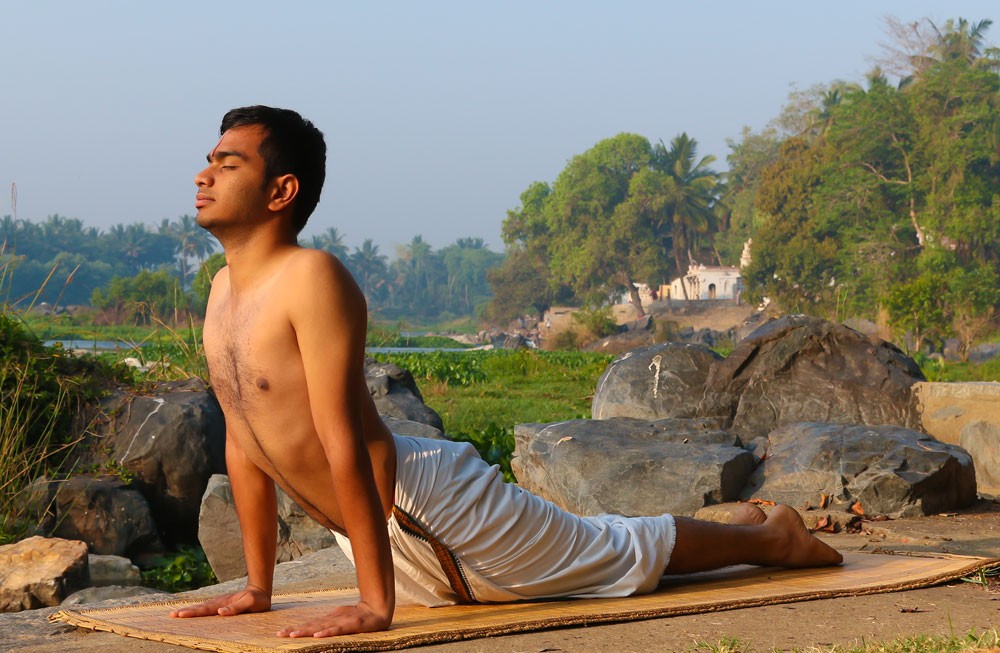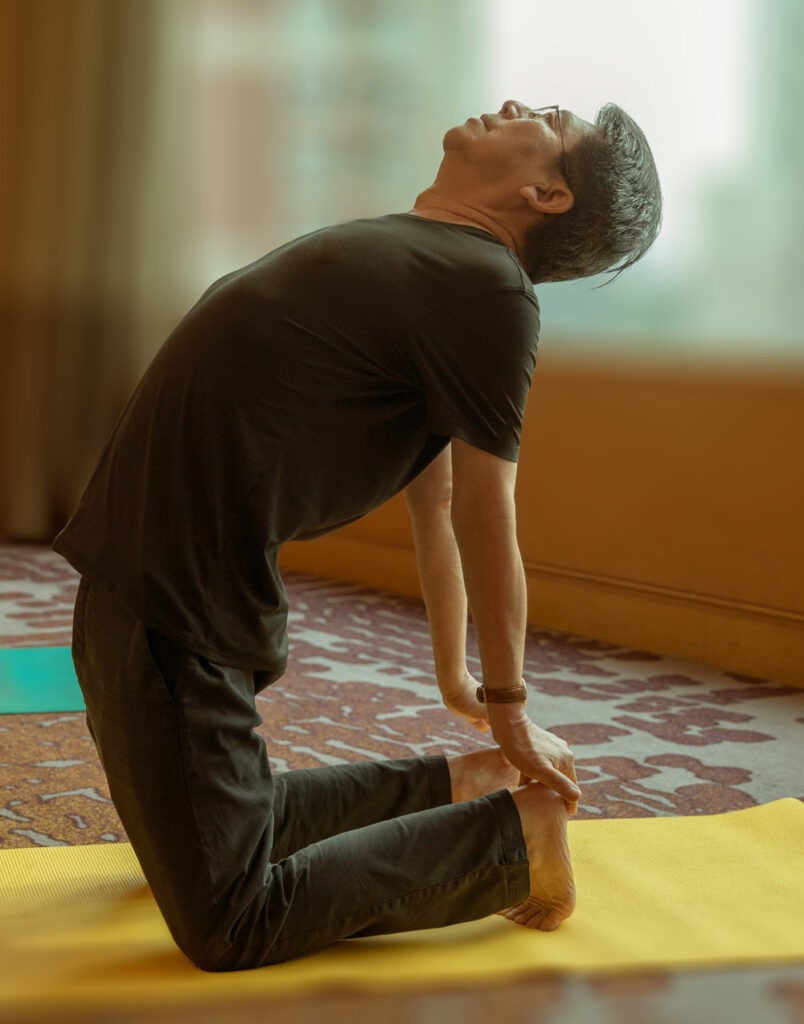What is Yoga essentially and what is all the fuss about? Yoga trainer Fatema Rajkotwala explains, in the second of a three-part series
It seems to me that everyone knows what Yoga is today and I don’t mean only a select subset of international traveling, city-dwelling, politically active, nationalism-loving or Rishikesh visiting Indians. Yet, every so often, once someone learns that I teach Yoga, they’ll ask me something basic such as, “I want to be able to sit for meditation but I don’t like Yoga; I do _____ form of exercise. Or ‘So, can you put your legs behind your head?’ Or ‘I want to learn Yoga but I’m not flexible.”
Of course, you’re not expected to ‘know how to do Yoga’, which is like saying you want to learn Japanese but you’re nervous about not knowing Japanese. This is why I’m happy to write about the basics of Yoga. For me it is something like knowing the answer to a puzzle – the answer is clear once you know it. Until then, it could be pretty confusing as to what exactly is Yoga, the various types of Yoga styles taught and why people all over the world seem to be obsessed about it.
Not just asanas
So, firstly, Yog pronounced as Yog-ah by westerners, is not restricted to simply asana practice, in a hot room or not. In fact, as per the Yoga Sutras, one is not even eligible to practice Asanas until you have practiced implementing the initial moral disciplines of personal and social conduct or Yamas and Niyamas. In our current slightly morally stray environment, it may seem difficult to decide when one is ready to ever undertake the practice of Asanas. The logic of this was simply the understanding that when one indulges in any immoral act via thoughts, words or action, one cannot be in a balanced state of mind enough to focus on disciplined practice.
And what may surprise some even more is that as per the text, the Hatha Yoga Pradipika, the most detailed and credible information on Hatha Yog, the classical form of physical exercise in ancient India as a culture, regardless of your religion, caste or creed, one is not advised to practice Pranayam until one has established oneself in regular, consistent Asana practice. Why then are most Yoga teachers teaching Pranayam within the first class you attend? This is because you can still get the preliminary benefits of training the breathing muscles through Kriyas (cleansing rituals such as Kapalbhati, correcting a habit of shallow breathing, opening and therefore balancing the flow chain of the breathing cycle by activating the dormant side of the nostrils. Although, I discovered that until a certain level of consistent Asana practice, it is difficult to have the lung capacity to smoothly practice anything more than one set (11 rounds) of any type of classical Poorvak (complete inhalation), Kumbhak (retention of breath within the lungs and chest cavity), Rechak (complete exhalation) and Shunyak (emptiness of breath after exhalation).
Most austere form
Having mentioned Hatha Yog, where one essentially follows a clean diet, punctual, heat generating practice and then challenges one’s boundaries by holding postures until the pose feels comfortable and pleasant. This was considered the most austere form of practice, where the yogi follows a strict regime, and attempts to balance the mind by gaining mastery over bodily discomforts. Ha-Tha literally translates as stubborn or determined.
Today, considering our modern lifestyles, today Hatha Yog is essentially reduced to a one hour session where one tries to align, breath, body and mind. Other popular forms of practice are the Vinyasa (flow of asanas as smooth sequences) or the Ashtanga style, which is a lovely combination of variations of surya namaskaram and holding postures with mindful attention to breath and bandhas (a body lock done through muscle holds to retain breath within a certain area of the body).
Zen masters, Yogis or even sportsmen and magicians have been training their lung capacities for centuries and amazed the world with feats, endless reserves of energy and core strength or by living long, healthy lives. Prana+Ayam or breath regulation is undoubtedly a powerful tool to increase one’s physical and mental wellbeing.
Breathing is the key
 Logically, the better we breathe, the better we replenish, reenergise and detoxify the systems within the body. It is staggering to learn that on an average we anyway breathe at below 50% or less of our total lung capacity. To add to that, through the day we essentially breathe ‘mindlessly’, only upto our upper respiratory tract, that is, shallow breathing. The magic of therapeutic healing, organ cleansing, hormonal balance happens when we take the slightly added effort of breathing in and out deeply, with patience until our rib cage expands, intercostal and deep core diaphragmatic muscles participate. This is when we catch up on all the times during the day that we may be distractedly breathing and short-changing our complete breath cycle.
Logically, the better we breathe, the better we replenish, reenergise and detoxify the systems within the body. It is staggering to learn that on an average we anyway breathe at below 50% or less of our total lung capacity. To add to that, through the day we essentially breathe ‘mindlessly’, only upto our upper respiratory tract, that is, shallow breathing. The magic of therapeutic healing, organ cleansing, hormonal balance happens when we take the slightly added effort of breathing in and out deeply, with patience until our rib cage expands, intercostal and deep core diaphragmatic muscles participate. This is when we catch up on all the times during the day that we may be distractedly breathing and short-changing our complete breath cycle.
The most important thing to remember is that Asana practice is essentially that: a practice. It is not a performance where we are more concerned about how we are looking aesthetically to others around us in a certain posture. Yog essentially means a union of the various seemingly unconnected parts of ourselves. So, it could mean the union of our physical body to our breath or Prana body, mind or though body (includes the mind, Ego and higher intellect or Buddhi) and therefore reaching a state of clarity where we feel more connected to our inner voice, consciousness or our inner True Selves.
Yog as Asana practice is meant as one of the techniques to attain, even a few moments of Ekagrata or one-pointedness of mind within our chaotic day. Yog is the union or alignment of our probably erratic breathing patterns, by releasing the restlessness that manifests in the form of unproductive physical and mental energy. Out of the 102 Yoga Sutras, only a total of 3 are dedicated to defining Asanas and 4 for Pranayams. This is a subtle reminder that while attaining control over our lower selves in the form of discipline and physical exercise, diet and a clean mental attitude, we have to rise above our fixation over our physical form in order to break the attachment we feel towards our bodies. Only when we have thoroughly examined the true nature and limitations of our physical selves can we be still enough to be ready for meditation. This is how we take the first step into living more consciously, mindfully and spiritually.



